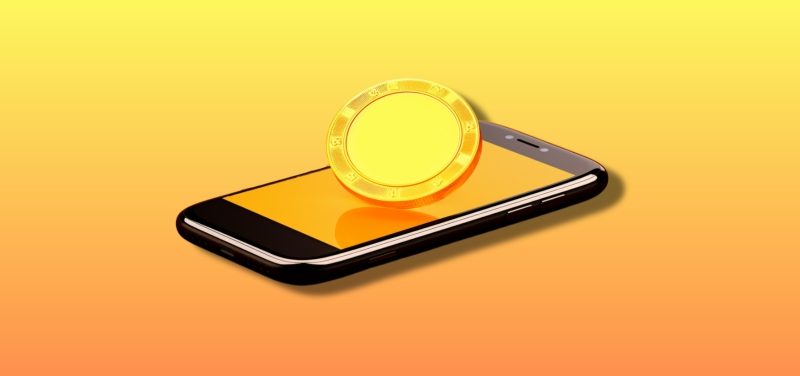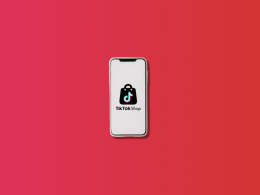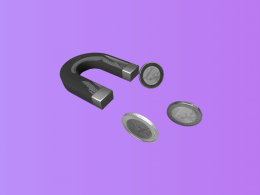The magic behind P2P payments lies in their simplicity and convenience. But what exactly are these payment systems, and how do they function? Peer-to-peer payment systems offer a seamless way for individuals to transfer funds from their bank account or credit card to another person’s account via the internet. Rather than being a luxury, these systems have become a necessity in our digital world where speed, efficiency, and convenience are paramount.
Contents:
1. What are P2P payment systems and why do we need them?
2. The journey: Evolution of P2P payments
3. The power of mobile: A crucial role
4. Market leaders: Who’s who in the P2P world
5. The perks: Benefits of P2P payments for individuals
6. Securing the deal: Security and privacy in P2P payments
What are P2P payment systems and why do we need them?
In their most basic form, P2P payment systems work through a mobile app or website. Say, for instance, you’ve enjoyed a meal with a friend and need to split the bill. The P2P payment process would begin with you, the payer, opening a mobile app such as PayPal. If you change your mind after sending the money, it is possible to cancel a PayPal payment, provided the recipient hasn’t yet accepted it.
Most P2P payment systems follow this basic process. However, each platform has its unique differences. These differences usually lie in how they handle security, transaction speeds, and fees. Some platforms offer instant transfers but charge fees, especially for credit card transactions, while others are free when linked to a bank account but may take one to three business days to process the transaction.
A significant variation between P2P payment platforms lies in how they accommodate unbanked or underbanked individuals—those without access to traditional banking services. Some services allow these users to maintain a balance within the app itself, acting as a digital equivalent to a bank account. This feature can be particularly beneficial in developing countries where access to banking services is limited.
So, in essence, P2P payment systems provide a streamlined and user-friendly alternative to traditional banking methods, offering convenience and financial inclusivity. As our world becomes increasingly digital, these systems are set to play an ever-growing role in our everyday financial dealings.
The journey: Evolution of P2P payments
Peer-to-peer (P2P) transactions have played a pivotal role in economic exchanges throughout human history, starting with the barter systems of early civilizations. These early P2P transactions relied on the direct exchange of goods and services between parties. As societies advanced, we embraced more complex forms of P2P transactions like cash and checks.
These traditional methods, however, had their shortcomings. They necessitated physical proximity, carried the risk of loss or theft, and often required considerable time and effort to process. The advent of the digital age provided the possibility for a groundbreaking form of P2P transaction – digital payments. This era began in 1998 with PayPal, which allowed people to send money to each other via email. With PayPal, individuals could conduct digital transactions, regardless of geographical boundaries.
The surge of smartphones and mobile applications in the subsequent years significantly influenced the growth of P2P payments. Venmo, a service introduced in 2009, enabled friends to easily divide bills, reimburse each other for expenses, and even attach a message to their payment. This ease of use, however, didn’t come without potential issues. Users occasionally experience issues such as a Venmo payment not showing up in their bank account, demonstrating that even these modern systems aren’t without flaws.
Other prominent platforms like Square’s Cash App, Google Pay, and Apple Pay have further integrated P2P payments into our daily routines. These platforms offer more than just the ability to transfer money. They also provide features like payment requests, social feeds, and integration with other digital services, which enhance their appeal and functionality. Some platforms, like Venmo, have even turned P2P payments into a form of social media, allowing users to share their payment activities with friends.
From its humble beginnings in barter systems to the sophisticated digital platforms we see today, the journey of P2P payments has truly been transformative. As more people opt for these services, understanding the platforms and their functionalities, such as how to verify a PayPal account, becomes increasingly important.
The power of mobile: A crucial role
It’s hard to understate the role of mobile devices in the world of P2P payments. The advent of the smartphone has revolutionized numerous aspects of our lives, including the way we handle money. The connectivity and versatility of mobile devices have paved the way for P2P payment apps, which facilitate direct money transfers between individuals, bypassing the need for traditional banking transactions.
The rise of P2P payment apps has coincided with the increasing prevalence of smartphones. As these devices became more affordable and widespread, the potential for mobile payments began to unfold. Companies quickly seized the opportunity to develop apps that could securely link to a user’s bank account or credit card, effectively transforming the phone into a digital wallet. Today, services such as Venmo, PayPal, Cash App, and Zelle offer mobile applications that make it easy for users to send money to friends, family, or businesses. All that’s required is the recipient’s phone number, email address, or a unique identifier used by the app.
Moreover, mobile P2P payments have gone beyond mere convenience and have made significant strides in addressing financial inclusivity. In many parts of the world, particularly in developing countries, people have access to mobile phones but lack access to traditional banking services. Here, mobile P2P payment systems can fill a vital gap. For instance, the M-Pesa service in Kenya allows users to deposit, withdraw, transfer money, and pay for goods and services easily with a mobile device.
While mobile devices have fundamentally reshaped the P2P payment landscape, it’s important for users to understand the potential risks involved. Security is a significant concern given the sensitivity of financial information. To mitigate these risks, P2P payment apps employ various security measures such as encryption, two-factor authentication, and transaction notifications. Users, too, must follow best practices such as using secure Wi-Fi networks, regularly updating the app, and keeping an eye on transaction histories.
Market leaders: Who’s who in the P2P world
The rise of P2P payments has given birth to a host of platforms, each offering unique features and competing for a share of the market. Let’s take a quick tour of the major players in the P2P payment market.
First off, we have PayPal. Often considered the pioneer of digital payments, PayPal started as a tool for online purchases but quickly expanded its services to cater to P2P transactions. With its acquisition of Venmo, PayPal managed to capture the younger demographics, thanks to Venmo’s social-media-like interface that includes a feed of user transactions.
Venmo itself has become a significant player in the P2P payment market, particularly in the United States. Its user-friendly design, social features, and instantaneous transactions have made it a favorite for many users. Venmo allows individuals to transfer money easily – be it for splitting dinner bills or paying rent. Its social feed feature lets users share their transactions with others, adding a unique, social networking element to the platform.
Square’s Cash App is another major contender. Originally launched to facilitate business transactions, Cash App has expanded its offerings to include P2P payments. One of Cash App’s unique selling points is its integration with Bitcoin, allowing users to buy, sell, and store the cryptocurrency directly within the app.
Zelle stands out as a digital payment network backed by several of the largest U.S. banks. This backing allows for quick, direct bank-to-bank transfers. For those who prefer not to hold a balance within a payment app, Zelle’s instant transfer to a linked bank account makes it an attractive choice.
Not to be left behind, tech giants Google and Apple have also made their entries into the P2P payment market with Google Pay and Apple Pay. Beyond facilitating P2P payments, these platforms are heavily integrated into their respective ecosystems, allowing users to make contactless payments at physical stores, purchase apps, pay for public transit, and more.
Emerging markets haven’t been left behind either. Services like M-Pesa in Kenya have made a significant impact, operating as mobile phone-based money transfer and microfinancing services. These services have significantly expanded access to digital payments for users who traditionally lacked access to banking services.
Each of these platforms brings its unique features to the table. However, they all share common attributes of convenience, speed, and security, making P2P transactions a breeze for their users. The differences come in the form of transaction fees, speed of transfers, international payment support, and social features.
For instance, while PayPal, Venmo, and Cash App charge fees for instant transfers and credit card payments, Zelle transfers are typically free, provided you have a bank account at a participating bank. International transfers are another differentiating factor. PayPal, with its extensive global coverage, stands out among competitors that focus mainly on domestic payments.
The perks: Benefits of P2P payments for individuals
The digital revolution has brought numerous benefits, and P2P payments are no exception. These payment systems offer several advantages to individuals that contribute to their increasing popularity.
The first and most evident advantage is convenience. Traditional money transfer methods like bank transfers or checks can be time-consuming and cumbersome. P2P payments, on the other hand, simplify these transactions to a few taps on a mobile device. Whether you’re splitting a dinner bill with friends, paying your landlord, or sending a birthday gift to a loved one, P2P payment apps make it possible to conduct immediate transactions, eliminating the need for cash or checks.
Next up is speed. Traditional bank transfers can take several business days to process. P2P payments, however, are usually instantaneous. This advantage is particularly handy for urgent payments or situations where a quick money transfer is crucial.
P2P payment systems can also be cost-effective. Many of these services are free or charge minimal fees for transactions, especially those linked to bank accounts. When compared to the fees associated with wire transfers or the cost of ordering checks, P2P payments can be a more affordable solution.
Beyond practical benefits, P2P payments also play a significant role in fostering financial inclusion. For unbanked or underbanked individuals, P2P payment systems offer the opportunity to receive, store, and send money digitally. This capability is particularly valuable in developing countries where banking infrastructure may be less robust.
Finally, P2P payments aren’t just about transactional efficiency; they offer a social experience as well. Some platforms, such as Venmo, include social features that allow users to share their transaction histories with friends or the public. This feature adds a fun, social networking element to the payment experience.
Securing the deal: Security and privacy in P2P payments
With great convenience comes great responsibility, especially where financial transactions are involved. With the rise in digital transactions via P2P platforms, robust security and privacy measures are essential to protect users and their funds.
P2P payment platforms handle sensitive information, such as bank account details and personal identifiers. This responsibility necessitates stringent security measures. Typically, these services employ end-to-end encryption, a method that scrambles data into an unreadable format during transmission, which can only be deciphered by the intended recipient. This technology helps prevent unauthorized access to user information during transactions.
Additional security measures include two-factor authentication (2FA), requiring a second form of identification beyond just a password, and transaction alerts, notifying users via email or text whenever a transaction occurs. However, despite these measures, P2P payments aren’t risk-free. Users should remain vigilant against potential threats like phishing attempts and always double-check the authenticity of communication supposedly from their P2P platform.
Privacy, another crucial aspect of P2P payments, can vary between platforms. While platforms should secure transaction data, some also gather additional user information, including location data and transaction histories, which can be used for advertising or other purposes. Therefore, it’s important for users to understand a platform’s privacy policy before signing up.
Lastly, P2P payments are not immune to human error. Incorrectly entering a recipient’s information can result in funds going to the wrong person. Some services offer features to mitigate this risk, such as the ability to cancel a payment, but it’s always best to double-check details before sending money.
Wrapping up
P2P payment systems offer simplicity, convenience, and financial inclusivity. They have revolutionized transactions, providing quick and secure transfers via mobile apps. As our world goes digital, these systems play a vital role in everyday financial dealings, making them a necessity. Users must be cautious about security while enjoying the benefits of fast and cost-effective transactions.
However, while P2P payments offer numerous benefits, they also bring potential security and privacy risks. Understanding these risks and taking steps to mitigate them is crucial for every P2P payment system user.







.png)
